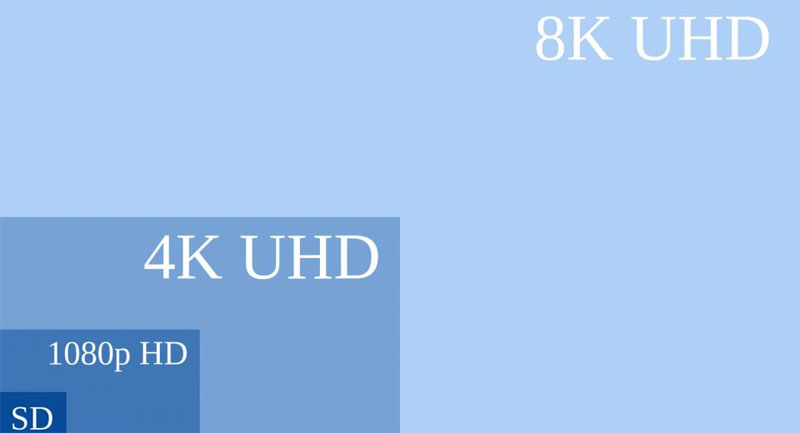4K? Ultra HD? What does it all mean?
Ultra HD and 4K
 Just as the Home Consumer Electronics industry seemed to have coined enough phrases to confuse the normal punter (HD Ready/Full HD/720p/1080i/1080p - more information here), along have come a couple more with which to add to their befuddlement. The manufacturers are doing themselves no favours, either, with their own naming conventions by using 4K and Ultra HD almost interchangeably when, in fact, they are slightly different.
Just as the Home Consumer Electronics industry seemed to have coined enough phrases to confuse the normal punter (HD Ready/Full HD/720p/1080i/1080p - more information here), along have come a couple more with which to add to their befuddlement. The manufacturers are doing themselves no favours, either, with their own naming conventions by using 4K and Ultra HD almost interchangeably when, in fact, they are slightly different.
4K
As the name would suggest, 4K uses an image with a resolution comprised of roughly four thousand horizontal lines of resolution. To be exact, 4K video based on the Digital Cinema Initiative (DCI) specifications is 4096 x 2160 pixels and offers more than twice the number of horizontal lines, compared to 1080p Full HD, and an overall resolution around four times greater. At this time, this is a standard you’re only likely to see in the cinema.
Ultra HD
Ultra HD, on the other hand, is the term favoured by the Consumer Electronics Association (CEA) to describe a television with a resolution of 3840 x 2160 pixels. It has exactly double the pixels of 1080p, both horizontally and vertically, and therefore has precisely four times the resolution. It also goes by the name UHD but, as we said above, some manufacturers – notably Sony and Panasonic – are using the term 4K to market their Ultra HD TVs. We actually have some sympathy for this idea but from a consumer standpoint, it would be better if everyone chose the same terminology.
The Ultra HD standard has been approved by the International Telecommunication Union (ITU) and actually has two resolutions defined. For the time being, we only need to be concerned with 4K UHDTV (3840 x 2160) but sooner than you think we’ll be dealing with 8K Ultra HD, with its 7680 x 4320 pixel count.
HDMI 2.0 and HDCP 2.2 are two of the things you should be looking out for with an Ultra HD TV
At this time, you can only lay your hands on a 4K Ultra HD telly and, even then, content with a native UHD resolution is currently very thin on the ground. The immediate future of Ultra HD seems to be through streaming and download services as it appears the movie studios are afraid of a physical disc (or other) format for fear it will be cracked and pirated, like all others that have preceded it. We still hanker after 4K Blu-ray but the question of whether we’ll see it or not remains up in the air.
For now, we’d advise your seeking out an Ultra HD TV with HDMI 2.0 compatibility and one supporting HDCP 2.2 to ensure at least some degree of future proofing as the standards evolve. The ultimate aim of the standards bodies is to use Ultra HD as a vehicle to introduce other picture enhancements, besides increased resolution, such as wider colour palettes (gamuts), higher frame rates and greater bit depth but whether there’s an interest from the manufacturers to improve the existing technologies to cope with those demands, in the near future, is also open to question. All the major manufactuers like Samsung, Panasonic, Sony and LG produce 4K Ultra HD TVs.
The ultimate aim of the standards bodies is to use Ultra HD as a vehicle to introduce other picture enhancements, besides increased resolution, such as wider colour palettes (gamuts), higher frame rates and greater bit depth but whether there’s an interest from the manufacturers to improve the existing technologies to cope with those demands, in the near future, is also open to question. All the major manufactuers like Samsung, Panasonic, Sony and LG produce 4K Ultra HD TVs.
If you require any further clarification please click the links below for more information at AVForums.
Get help setting up your TV picture with helpful videos and a forum to answer your questions at Picture Perfect.